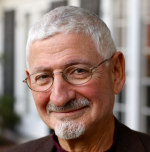Last week I participated in a Forum on Future Cities hosted by MIT’s Senseable City Lab with support from the Rockefeller Foundation. The Senseable City Lab was founded in 2004 by architect and engineer Carlo Ratti, who is a faculty member in MIT’s Department of Urban Studies and Planning. Its key objective is to bring together the worlds of design and architecture with the worlds of technology and engineering, in order to understand and anticipate how digital technologies are changing the urban environment as well as their impact on people’s lives.
The Forum on Future Cities attracted leading world thinkers from academia, industry and government to discuss the most pressing issues surrounding the large scale urbanization taking place all around us, and to explore how new mobile, smart technologies can contribute to help us better manage our rapidly growing cities. The Forum included talks and panel discussions on a wide variety of subjects. I moderated a session on Changing Research, which included six talks on new research ideas followed by a panel discussion.
My overriding impression of the Forum is the variety of skills and disciplines that are now coming together to study cities and urban systems in general. Urban studies and planning has been a major area of human endeavor from time immemorial, ever since people started congregating in towns. But, it does seem that in the last decade, the discipline has significantly expanded, for at least two main reasons.
First, is the rapid urbanization of the planet. According to statistics published by the UN Population Division, about 50% of the roughly 7 billion population in the world now live in urban areas, including 75% of the population in more developed regions, and 45% in less developed ones. In 1950, less than 30% of the world’s population lived in urban areas. By 2030, urbanization will approach 60%, and by 2050 almost 70%. By 2050, the world's population is expect to surpass 9 billion, of which $6.3 billion will live in cities, compared to $3.5 billion today. These are truly staggering growth rates.
Thus, the planet is undergoing a process of rapid urbanization, – one of the major forces impacting every aspect of societies and economies. Helping improve the way cities around the world work must be one of our top priorities, so they can absorb all those people and adjust to their rapid growth in as smooth a way as possible.
Fortunately, we now have a variety of technologies at our disposal to now apply to this task, including smart mobile devices and sensors; broadband wireless networks; massive computing and storage clouds; and lots of real time information, that when properly analyzed can help us better understand what is going on and improve the management of cities at all levels.
There is a lot of work now underway to improve every aspect of a city, from its physical infrastructure – transportation, utilities, communications, energy and water management; to its economic development – job creation, government policies, taxation and financial management; to its quality of life or liveability, – including education, health care, public safety, culture and community services.
We have all been learning that all these various components of a city – its physical, economic and human infrastructures, – do not work in isolation but strongly interact with and impact each other. Cities should increasingly be viewed as highly complex systems of systems, where the whole – what makes a city great – is far more than the sum of its parts.
The study of cities has thus recently become a major area of multidisciplinary activity. The technical challenges are attracting many new entrants from the world of technology and engineering systems. The business opportunities are attracting many private sector companies.
This diversity of interests was reflected in the speakers and participants at the Forum on Future Cities. For example, the Changing Research session I moderated included six speakers. Three of them were from academia and had backgrounds in urban planning. The other three came from the world of business. They were experts in technology and telecommunications, and are now looking to apply their expertise to urban systems. I believe this is a typical mix.
As the Senseable City Lab’s website observes: “The real-time city is now real! The increasing deployment of sensors and hand-held electronics in recent years is allowing a new approach to the study of the built environment. The way we describe and understand cities is being radically transformed – alongside the tools we use to design them and impact on their physical structure.” This will truly be of the most exciting and important areas of study in the decades ahead.
